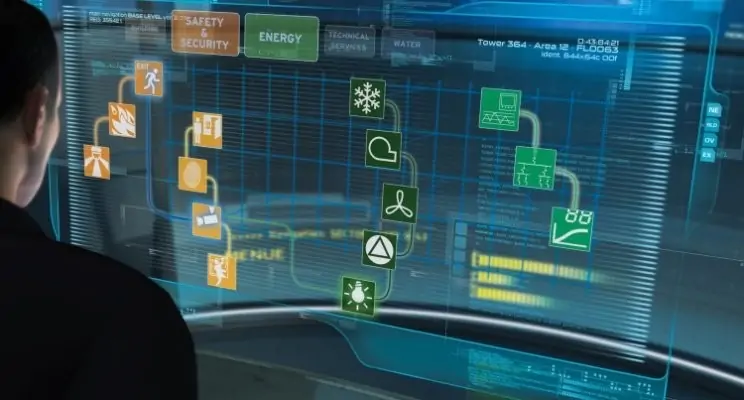Imagine a residential block that seamlessly manages its energy use, optimizes comfort, and minimizes environmental impact.
This vision can be realized through Building Management Systems (BMS) controls, a powerful technology transforming the way we manage our living spaces.
What are BMS Controls?
A BMS acts as the central nervous system of a residential block, integrating various systems like heating, ventilation, air conditioning (HVAC), lighting, and security.
Sensors throughout the building collect real-time data on factors like temperature, humidity, and occupancy. This data is then fed into a central control unit that analyses it and sends commands to optimize system operation.

Benefits for Residents:
- Reduced Energy Costs: By optimizing energy use based on real-time data and occupancy patterns, BMS controls can significantly lower overall energy consumption, leading to potential savings on utility bills for residents.
- Improved Air Quality: BMS controls can monitor and regulate ventilation systems, ensuring optimal air quality and a healthier living environment.
- Enhanced Security: Integration with security systems allows for centralized monitoring and control, offering residents increased peace of mind.
Benefits for Property Managers:
- Increased Efficiency: Streamlined operation of building systems through centralised control translates to less time spent on manual adjustments and troubleshooting.
- Preventive Maintenance: Real-time data from sensors can identify potential issues before they escalate, enabling proactive maintenance and preventing costly breakdowns.
- Reduced Operational Costs: Energy savings achieved through optimisation contribute to lower overall operating costs for the building.
- Improved Resident Satisfaction: A comfortable, energy-efficient, and secure living environment fosters higher resident satisfaction and potentially reduces turnover.
The Road to Decarbonisation:
- Energy Efficiency: At the core of decarbonisation lies optimizing energy use. BMS controls significantly contribute to this by reducing wasted energy consumption through intelligent system management.
- Renewable Energy Integration: BMS controls can be integrated with renewable energy sources like solar panels. By intelligently managing grid dependence and utilizing renewable energy when available, the building’s carbon footprint shrinks.
- Demand Response Management: During peak energy demand periods,BMS controls can automatically adjust systems to reduce consumption. This participation in demand response programs can incentivise the use of renewable energy sources and contribute to a cleaner grid.

How it all comes together:
A combined system with – SOLAR + BATTERY STORAGE + BMS Controls
With batteries integrated into the BMS system, excess energy generated by the solar panels during off-peak periods can be stored and strategically utilised during peak hours.
This allows the building to rely less on the grid when demand is high reducing strain on the overall system and potentially lowering electricity costs.
Furthermore, by having a system set up in this way residential blocks can maximize their contribution to grid stability in two ways:
- Reduced Demand: The building can strategically reduce its reliance on the grid during peak hours, lessening the overall demand.
- Renewable Energy Source: By utilizing stored solar energy, the building injects clean, renewable energy back into the grid during peak periods, promoting a cleaner energy mix.
This combined approach of BMS controls, solar panels, and battery storage creates a truly sustainable and efficient residential block, promoting resident comfort, reducing operational costs, and contributing to a greener future.
